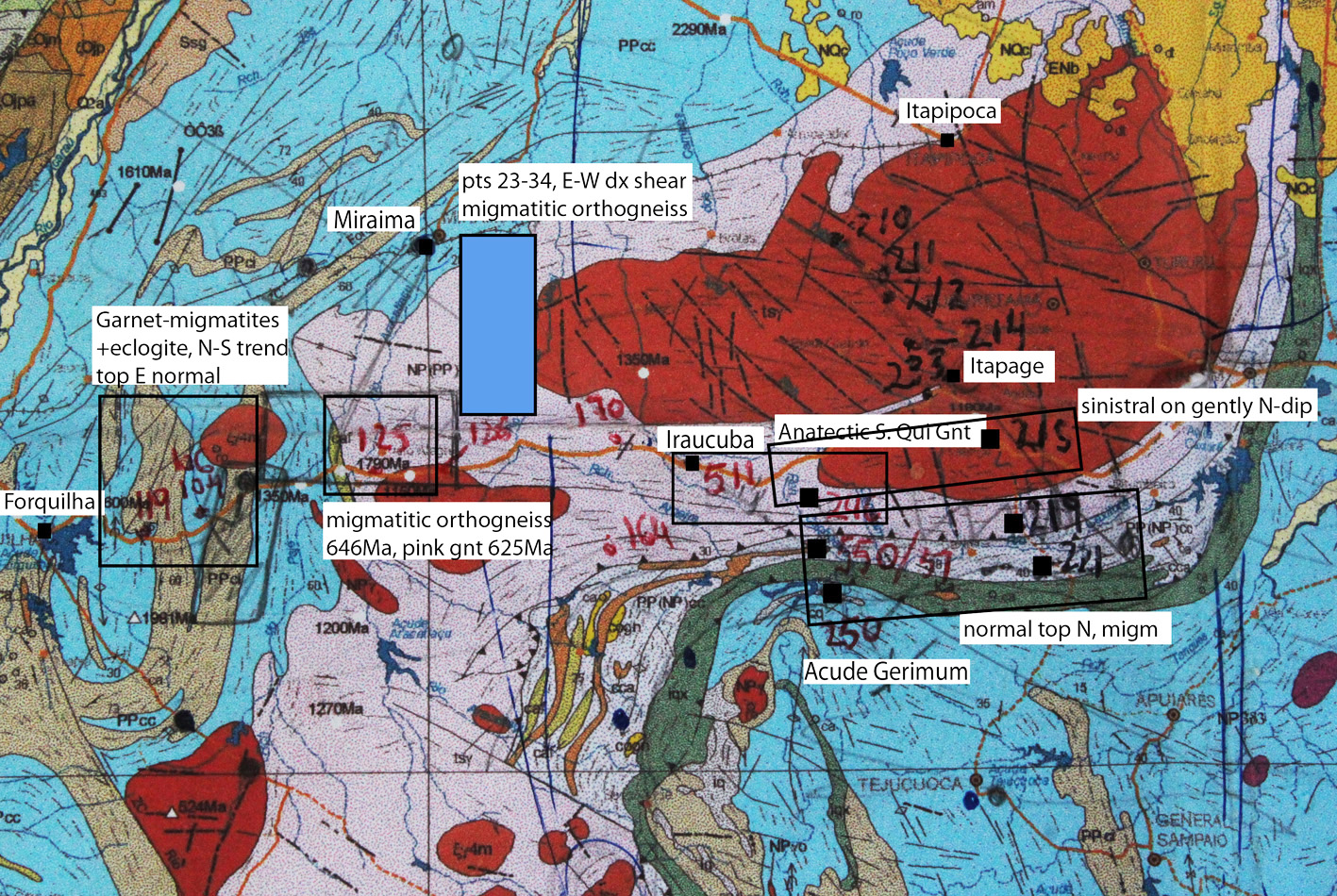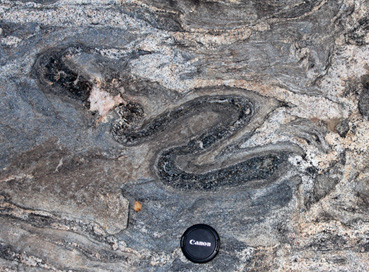Tamboril-Santa Quiteria Complex, Ceara, Brazil
|
|
This page documents our findings in and around the Santa Quiteria granite body. The observations were made in a triangular zone between the towns of Itapage, Itapipoca and Forquilha (map in Fig. 1). The granite complex is comprised of a porhyritic granite with mafic enclaves and has been dated at 640Ma. It is surrounded by migmatitic rocks including anatectic facies of the Santa Quiteria granite and older orthogneisses and paragneisses. This series include eclogite (paleo-eclogite bodies) seen in pt 106. The metamorphic grade of the migmatites to the south of the granite body increases with distance. First, there is a migmatite band which lacks anhydrous peritectic minerals and suggest water-fluxed, low-T melting. This is followed southwards by the appearnace of garnet in the leucosomes and an increase in melt fraction represented by leucosomes, and indicative of Bt-dehydration melting. Interestingly, we found porphyritic granite very similar to the Santa Quiteria pluton, migmatized in both regions, forming a garnet, K-feldspar porphyritic migmatite at high metamorphic grade. Migmatization has been dated at 620Ma, 20 m.yr. after granite crystallization. Structurally we investigated the west part of the area close to Forquilha where the regional trends are dominantly N-S and a band south of the pluton including the region of Itapage and to the south. In the E=W trending region close to Forquilha, we found normal movement on C=010/30E (top to the E) overprinted by dextral movement on C=010/80E in migmatites with garnet in leucosome (pt 104), or normal movement on C//So=20/30E also in migmatites with garnet in leucosomes (pt 119) In the region south and immediately west of Santa Quiteria pluton, the rock sequence comprises mylonites, protomylonites and gneisses (ortho and para), and the main trend in E-W and gently N-dipping. Southwards from the pluton the movement sense changes from recording strike slip movement to recording north-dipping normal movement. The normal shearing found in Forquilha and south of Itapage is surprising given what is reported in the literature. It points to the possibility that the core of the pluton went down in relation to its surroundings during a generalized extension. This explains the exhumation of the 650Ma eclogites.
|

|
| a) Geological Map of the Santa Quiteria granite in red and surroundings with hand written field stations. |
